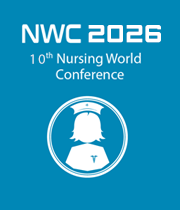High Risk Obstetrics
High-risk obstetrics, a specialized branch within the realm of maternal-fetal medicine, focuses on pregnancies characterized by increased complexities and potential complications. This field recognizes that certain factors, ranging from maternal health conditions to the intricacies of multiple gestations, necessitate a tailored and vigilant approach to ensure the well-being of both the mother and the developing fetus. High-risk pregnancies often require the expertise of a multidisciplinary team, including obstetricians, maternal-fetal medicine specialists, genetic counselors, and neonatologists, working collaboratively to navigate the unique challenges that each case presents. High-risk obstetrics is particularly relevant in cases of advanced maternal age, where women over the age of 35 face increased risks of chromosomal abnormalities and pregnancy complications. Prenatal genetic testing, such as non-invasive prenatal testing (NIPT), offers a non-invasive means of assessing fetal genetic health. Invasive procedures like amniocentesis or chorionic villus sampling (CVS) may be recommended for a more comprehensive genetic analysis. These diagnostic tools enable healthcare professionals to provide expectant mothers with accurate information about the health of the fetus, empowering them to make informed decisions about their pregnancy.
The management of multiple gestations, including twins or higher-order pregnancies, is another critical aspect of high-risk obstetrics. The increased likelihood of preterm birth, low birth weight, and complications such as twin-to-twin transfusion syndrome necessitate specialized care. Advanced ultrasound imaging, growth assessments, and coordination with neonatologists are integral components of the comprehensive care plan for multiple gestations. The goal is to optimize outcomes for each fetus, considering the unique challenges posed by the presence of multiple fetuses. Complications such as preeclampsia, placenta previa, and gestational diabetes further exemplify the diverse landscape of high-risk obstetrics. These conditions may require hospitalization and close monitoring to detect and address potential issues promptly. Preeclampsia, characterized by high blood pressure and organ damage, can have serious implications for both the mother and the baby. Timely intervention is crucial to managing this condition and minimizing risks. Gestational diabetes, on the other hand, requires careful blood sugar management to prevent complications for both the mother and the developing fetus.



Title : The power of presence: Investing in LVNs for lasting impact
Emma Gitomer, Houston Methodist Hospital, United States
Title : Reaching our residents: An interdisciplinary approach to educating our future providers in the art of telephone triage
Cori Brown, Childrens Hospital of Philadelphia, United States
Title : Turn the heat around: Quality improvement in malignant hyperthermia response through in-situ simulation
Ayumi S Fielden, Houston Methodist Hospital, United States
Title : PTSD and tools for nursing resilience
Renee Bauer, Indiana State University, United States
Title : Birth partnerships: Enhancing nursing care with doula support
Vera Kevic, Doulas on Bikes, Canada
Title : Shift strong: A proactive stress-physiology framework for early identification of nurse distress
Laura Hall, Colorado Mesa University, United States